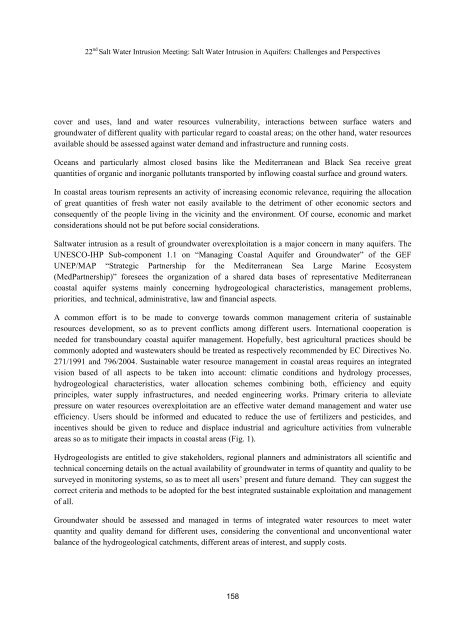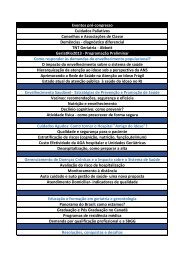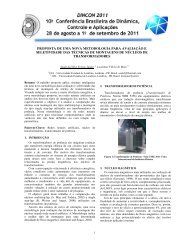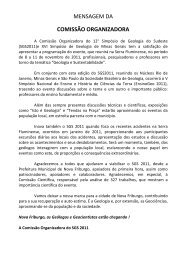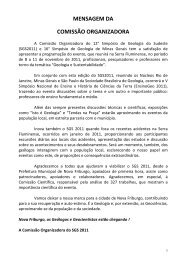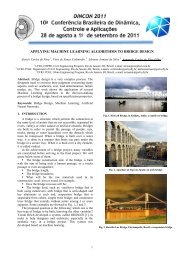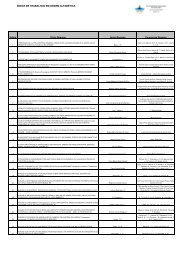Here - Meta Marketing e Eventos
Here - Meta Marketing e Eventos
Here - Meta Marketing e Eventos
- No tags were found...
You also want an ePaper? Increase the reach of your titles
YUMPU automatically turns print PDFs into web optimized ePapers that Google loves.
22 nd Salt Water Intrusion Meeting: Salt Water Intrusion in Aquifers: Challenges and Perspectivescover and uses, land and water resources vulnerability, interactions between surface waters andgroundwater of different quality with particular regard to coastal areas; on the other hand, water resourcesavailable should be assessed against water demand and infrastructure and running costs.Oceans and particularly almost closed basins like the Mediterranean and Black Sea receive greatquantities of organic and inorganic pollutants transported by inflowing coastal surface and ground waters.In coastal areas tourism represents an activity of increasing economic relevance, requiring the allocationof great quantities of fresh water not easily available to the detriment of other economic sectors andconsequently of the people living in the vicinity and the environment. Of course, economic and marketconsiderations should not be put before social considerations.Saltwater intrusion as a result of groundwater overexploitation is a major concern in many aquifers. TheUNESCO-IHP Sub-component 1.1 on “Managing Coastal Aquifer and Groundwater” of the GEFUNEP/MAP “Strategic Partnership for the Mediterranean Sea Large Marine Ecosystem(MedPartnership)” foresees the organization of a shared data bases of representative Mediterraneancoastal aquifer systems mainly concerning hydrogeological characteristics, management problems,priorities, and technical, administrative, law and financial aspects.A common effort is to be made to converge towards common management criteria of sustainableresources development, so as to prevent conflicts among different users. International cooperation isneeded for transboundary coastal aquifer management. Hopefully, best agricultural practices should becommonly adopted and wastewaters should be treated as respectively recommended by EC Directives No.271/1991 and 796/2004. Sustainable water resource management in coastal areas requires an integratedvision based of all aspects to be taken into account: climatic conditions and hydrology processes,hydrogeological characteristics, water allocation schemes combining both, efficiency and equityprinciples, water supply infrastructures, and needed engineering works. Primary criteria to alleviatepressure on water resources overexploitation are an effective water demand management and water useefficiency. Users should be informed and educated to reduce the use of fertilizers and pesticides, andincentives should be given to reduce and displace industrial and agriculture activities from vulnerableareas so as to mitigate their impacts in coastal areas (Fig. 1).Hydrogeologists are entitled to give stakeholders, regional planners and administrators all scientific andtechnical concerning details on the actual availability of groundwater in terms of quantity and quality to besurveyed in monitoring systems, so as to meet all users’ present and future demand. They can suggest thecorrect criteria and methods to be adopted for the best integrated sustainable exploitation and managementof all.Groundwater should be assessed and managed in terms of integrated water resources to meet waterquantity and quality demand for different uses, considering the conventional and unconventional waterbalance of the hydrogeological catchments, different areas of interest, and supply costs.158


